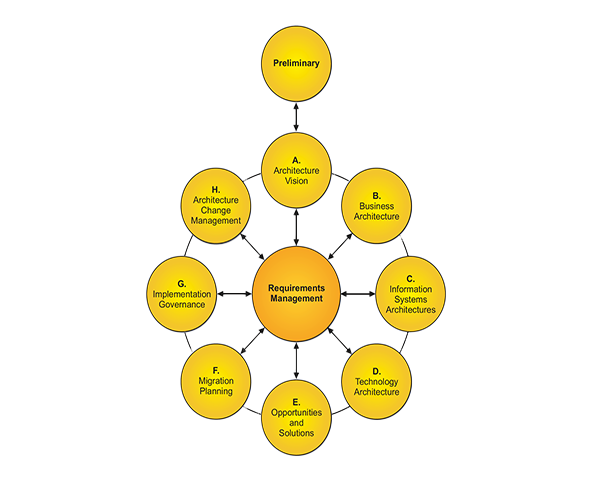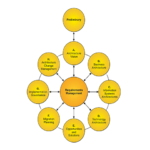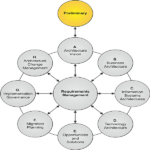A Deep Dive into TOGAF
Understanding the Architecture Development Method (ADM) cycle is crucial in enterprise architecture. While we will explore the intricate details of this cycle, it’s helpful to start with an intuitive overview. The ADM cycle comprises eight interconnected phases, denoted A through H, arranged in a circular format. This cyclical nature signifies that once you complete phase H, you seamlessly return to phase A, fostering continuous improvement and adaptation.
The Structure of the ADM Cycle
At the center of the ADM cycle lies Requirements Management, underscoring the importance of ongoing requirements oversight. Surrounding this core is the Preliminary Phase, the foundation for the subsequent phases. There are ten phases: eight aligned with the cycle (A through H) and two additional phases that guide the overall process.
Navigating Phase H
Phase H, the concluding phase of the cycle, often involves waiting periods during which you assess the results of previous implementations or await changes in the competitive landscape. It’s essential to recognize that this does not imply you’ll be engaged in phase H continuously; this phase allows for pauses and reviews. This is a crucial time for reflection on whether the implementations are meeting your expectations or if adjustments to requirements are necessary.
The Agile Nature of TOGAF
One of the standout features of TOGAF is its agility. The model allows for flexibility within the phases. For instance, if your organization faces unexpected challenges, such as a competitor’s new product launch, you may need to convene an urgent meeting to address these changes. This may require revisiting phase A, refining the vision or business goals, and adjusting the project timeline.
Iterative Processes and Adaptability
Within the ADM framework, TOGAF promotes a significant degree of iteration. Phases A, B, C, and D, which facilitate business systems and technology requirements, often do not unfold sequentially. Instead, teams might work through these phases simultaneously, continuously refining their approach. This iteration can involve cycling back to previous phases or adjusting drafts as needed, ensuring the architecture aligns with the evolving business landscape.
The Open Group has outlined various suggested iterations within the ADM framework. For example, start in the Preliminary Phase, shift to the Vision Phase, and backtrack as necessary to ensure alignment and accuracy in your architecture development.
Tailoring TOGAF for Your Organization
One of the most significant aspects of TOGAF is its adaptability. Organizations typically do not implement the framework verbatim. Instead, they tailor the ADM to suit their unique needs. For instance, if your organization prioritizes security, involving the security team at various stages of the ADM process would be vital, as well as adapting the standard to integrate their requirements.
This tailoring also includes modifying workflows to align with existing IT standards or incorporating new stakeholders and documents that reflect your organization’s specific practices. It is rare for companies to follow TOGAF’s standards word-for-word; instead, they selectively adapt the framework to fit their operational context.
In summary, the ADM cycle is not merely a linear process; it is a dynamic, iterative pathway that adapts to the organization’s needs, allowing for flexibility and responsiveness in architectural development. As you navigate through TOGAF, remember that one of its greatest strengths is the ability to tailor the framework to your specific requirements.
Feel free to share your experiences with implementing the ADM cycle in your organization, it’s an ongoing journey of learning and adaptation.




Pingback: The ADM Phase – Toks Lawal